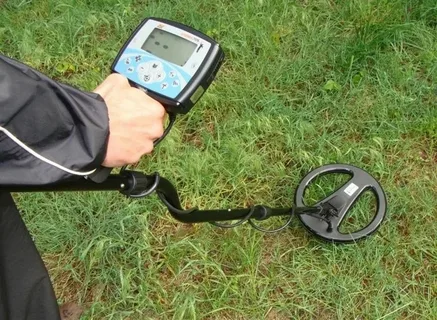Mining is essential to our everyday lives, providing the materials needed for countless products and infrastructure. As global demand for resources continues to grow, the mining industry is constantly evolving to meet these needs. In order to ensure a sustainable and efficient future for mining, it is essential to explore innovative techniques and technologies. This exploration is crucial for improving operations, minimizing environmental impact, and maximizing resource recovery. In this article, we will delve into the future of mining, focusing on the innovative techniques and technologies that are shaping the industry.
Exploring the Future of Mining: Innovative Techniques and Technologies is a conference or seminar that aims to delve into the advancements and potential breakthroughs in the field of mining. The event likely features presentations, panel discussions, and workshops showcasing cutting-edge technologies, sustainable practices, and innovative techniques that are shaping the future of the mining industry. It may also cover topics such as digital transformation, automation, renewable energy, and environmental impact mitigation in mining operations. The event provides a platform for industry professionals and experts to exchange ideas, insights, and best practices to drive the sector forward.
The Environmental Impact of Into Mining: A Closer Look

The environmental impact of mining is a complex and far-reaching issue that affects ecosystems, water quality, air pollution, and local communities. “Into Mining: A Closer Look” delves into the specific environmental consequences of mining practices, including deforestation, soil erosion, and habitat destruction. The documentary also examines the impact of mining on water resources, such as contamination from toxic chemicals and heavy metals. Additionally, it explores the energy consumption and greenhouse gas emissions associated with mining operations, as well as the potential for long-term environmental degradation. The film provides a comprehensive overview of the environmental challenges posed by the mining industry, shedding light on the need for sustainable and responsible mining practices.
Economic Opportunities and Challenges in Into Mining
See also: gold detector price

The mining industry presents various economic opportunities and challenges. On one hand, it provides employment and income for workers and contributes to the overall economic growth of a region or country. Additionally, it can generate revenue through taxes and royalties paid by mining companies to the government. However, mining also brings about several challenges, such as environmental degradation, health and safety risks for workers, and conflicts with local communities over land and resources. Moreover, the industry is subject to fluctuations in commodity prices, which can impact the profitability and sustainability of mining operations. Overall, the economic opportunities and challenges in the mining sector require careful consideration and management to ensure sustainable and inclusive development.
Into Mining: The Role of Technology and Innovation

Into Mining: The Role of Technology and Innovation is a comprehensive article that explores the ways in which advancements in technology are shaping the mining industry. The article delves into various innovative technologies that are being adopted in mining operations, such as autonomous vehicles, drones, and advanced analytics. It also discusses the impact of these technologies on improving safety, efficiency, and sustainability in the mining sector. Additionally, the article highlights the role of innovation in driving the mining industry forward and addresses the potential future developments in technology that could further revolutionize the sector.
The Social Effects of Into Mining on Local Communities

The social effects of mining on local communities can be significant. Large-scale mining operations can bring economic benefits to a region, such as job creation and increased infrastructure development. However, they can also have negative impacts on the social fabric of the community.
One of the major social effects of mining is the displacement of local communities. In some cases, mining operations require the relocation of entire villages or towns, leading to the loss of traditional livelihoods and social networks. This can cause social disruption and a breakdown of community cohesion.
Mining can also have negative impacts on local cultures and traditions. The influx of new workers and the development of mining infrastructure can lead to changes in local customs and values. In some cases, this can lead to the erosion of traditional ways of life and a loss of cultural identity.
Mining operations can also lead to social conflict within local communities. Disputes over land rights, resource ownership, and environmental concerns can lead to tensions and divisions within the community. This can result in social unrest and a breakdown of trust between community members.
Furthermore, mining activities can have detrimental impacts on the health and well-being of local residents. Air and water pollution, as well as noise and dust from mining operations, can lead to negative health effects for nearby communities. This can contribute to a decline in the overall quality of life for local residents.
Overall, the social effects of mining on local communities are complex and varied. While mining can bring economic opportunities, it can also have significant negative impacts on the social well-being and cohesion of affected communities. It is important for mining companies and policymakers to consider the social effects of mining and work to mitigate these impacts through community engagement and sustainable development practices.
Into Mining and Global Resource Management: Finding a Balance
“Into Mining and Global Resource Management: Finding a Balance” is a comprehensive guidebook that delves into the complex relationship between mining activities and the management of global resources. The book explores the various environmental and social impacts of mining, as well as the strategies and technologies that can be employed to mitigate these impacts. Additionally, it addresses the economic and political implications of resource management, offering insights into how the industry can achieve a sustainable balance between extraction and conservation. The publication is an essential resource for industry professionals, policymakers, and anyone interested in understanding the intricate dynamics of mining and resource management on a global scale.
Into Mining: Exploring Ethical and Sustainable Practices
Into Mining: Exploring Ethical and Sustainable Practices is a seminar or workshop that delves into the ethical and sustainable practices within the mining industry. This event may cover topics such as environmental impact, community engagement, labor practices, and responsible resource extraction. The aim is to educate participants about the importance of ethical and sustainable mining practices and to explore ways in which these principles can be integrated into mining operations. The seminar may feature industry experts, case studies, and interactive discussions to deepen understanding and encourage action towards more responsible mining practices.
Regulatory Frameworks for Into Mining: A Global Perspective
“Regulatory Frameworks for Mining: A Global Perspective” explores the various regulations and policies that govern the mining industry around the world. The book provides an in-depth analysis of the legal, environmental, and social frameworks that impact mining operations, including case studies from different countries. It delves into the complexities of navigating regulatory requirements in different jurisdictions and the implications for multinational mining companies. It also addresses the challenges and opportunities for sustainable mining practices within the framework of evolving regulations. This comprehensive resource offers valuable insights for industry professionals, policymakers, and researchers interested in understanding the regulatory landscape of the global mining sector.
The Future of Into Mining: Opportunities and Risks
The future of mining is being shaped by a range of opportunities and risks. On the one hand, advancements in technology such as automation, advanced analytics, and robotics are revolutionizing the industry, making operations more efficient and safer. Additionally, the growing demand for metals and minerals, particularly in the context of renewable energy technologies, presents significant opportunities for mining companies.
However, there are also considerable risks that must be addressed. Environmental concerns, including water usage and tailings management, are increasingly important for the industry. Furthermore, geopolitical instability, resource nationalism, and shifts in regulatory frameworks present potential challenges for mining operations.
Overall, the future of mining presents both exciting opportunities and complex risks that require careful consideration and strategic planning.
Investing in Into Mining: Assessing Long-Term Viability
Investing in mining requires a thorough assessment of the long-term viability of a project. This involves evaluating factors such as the quality and quantity of resources, the potential for profitability, environmental and regulatory considerations, and the stability of the market. Conducting thorough due diligence and working with experienced professionals are essential for making informed investment decisions in the mining sector. Understanding the potential risks and rewards of investing in mining is crucial for achieving long-term success in this industry.
Into Mining and Corporate Responsibility: Navigating a Complex Landscape
The book “Into Mining and Corporate Responsibility: Navigating a Complex Landscape” provides a comprehensive overview of the challenges and opportunities related to corporate responsibility within the mining industry. It explores the environmental, social, and governance issues that mining companies must navigate, and offers practical strategies for integrating responsible practices into their operations. With contributions from industry experts and scholars, the book addresses topics such as community engagement, stakeholder management, sustainability reporting, and ethical supply chains. It serves as a valuable resource for mining professionals, policymakers, and stakeholders seeking to understand and address the complex landscape of corporate responsibility in the mining sector.










